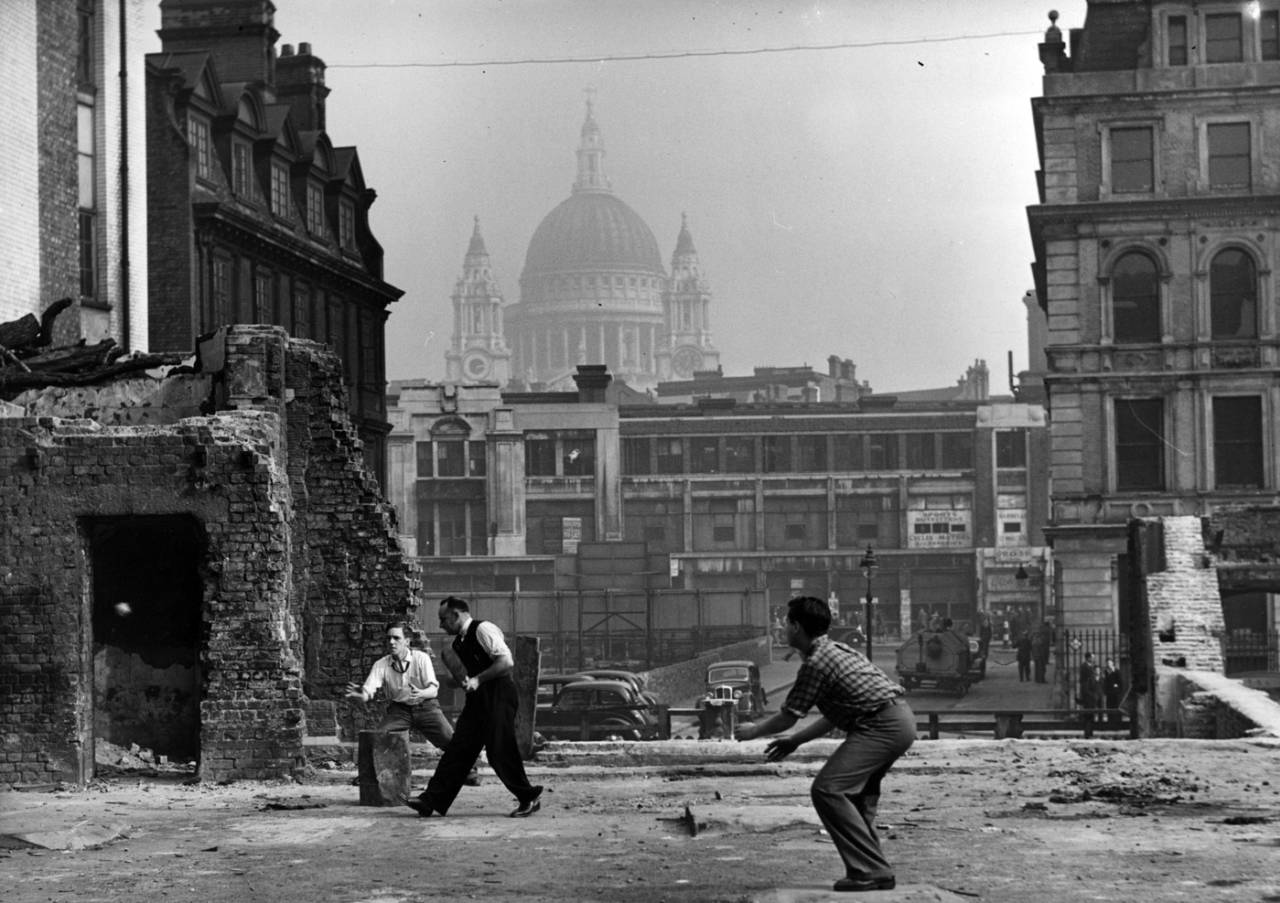War imagery has always been used to describe sporting contests: "battled on", "assault", "marshall the troops", "lay siege to", "tracer bullet", "shell-shocked". John Buchanan, in fact, is known to have taken more than a page or two out of Sun Tzu's The Art of War during his time as coach of Australia.
The metaphors of conflict help paint a picture of sorts for us spectators, but they begin to feel hollow when we look back at the number of players who had to leave the cricket fields to fight in real battlegrounds and the number of people who still try to lead lives (and sometimes play cricket) in war-torn areas today.
October 1945: World War Two was over but it would take years for Britain to recover from the blitzkrieg bombings. In the picture above, a group of men play cricket in Blackfriars, London, during their lunch hour, with St Paul's Cathedral in the background. According to the BBC, during the 1940 Blitz attacks in London, Winston Churchill asked that St Paul's be protected at all costs to preserve the morale of the people. "Bombs rained down on the cathedral. Volunteer firewatchers patrolled its myriad corridors, armed with sandbags and water pumps to douse the flames… an incendiary device lodged on the roof. As it burned, the lead of the iconic dome began to melt. But luck was on the side of the firewatchers. The bomb dislodged, fell to the floor of the Stone Gallery, and was smothered with a sandbag. St Paul's was saved."
Members of the Royal Air Force play cricket in the Kuwait desert, near the Iraq border, in 2003.
Len Hutton and
Stan Nichols (first and second from left), who played together in
England's last Test before the war, in 1939, on parade at an Army School of Physical Training in 1940. Nichols, 38 during that match, didn't play for England again. Hutton, 22, went on to play 66 Tests after the war.
The Oval took on the grim look of a prisoner of war camp in 1944. However, while the ground housed searchlight batteries, it was actually never used as a POW camp for enemy parachutists as planned.
Another example of war metaphors in sport - a 1933 Australian cartoon suggesting things might get worse when the secretary of war, Lord Hailsham became the MCC president during the Bodyline series.
Smoke from a V-1 flying bomb, also known as the Doodlebug, rises above Lord's during a 1944
Army v RAF match featuring Test cricketers Wally Hammond, Les Ames, Maurice Leyland, Bill Edrich and Bob Wyatt.
A stark reminder of the violence we have grown accustomed to today: a group of Afghan youngsters play in front of a destroyed helicopter in Kabul in 2006.




![A cartoon by Alexander George Gurney first published in the <i>Adelaide News</i> with the caption: "The British Secretary for War [Lord Hailsham] is the new president of the MCC, so the body line bowling war takes on a more serious aspect", 1933](https://wassets.hscicdn.com/static/images/lazyimage-noaspect.svg)






![A cartoon by Alexander George Gurney first published in the <i>Adelaide News</i> with the caption: "The British Secretary for War [Lord Hailsham] is the new president of the MCC, so the body line bowling war takes on a more serious aspect", 1933](https://wassets.hscicdn.com/static/images/lazyimage-noaspect.svg)

